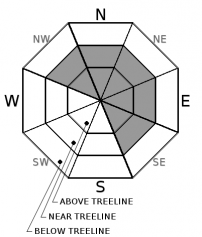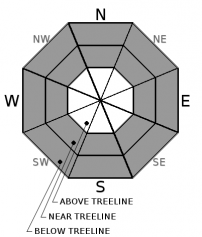| Thursday | Thursday Night | Friday | |
|---|---|---|---|
| Weather: | Mostly cloudy with isolated snow showers in the morning. Snow becoming likely in the afternoon | Snow | Snow with slight chances of thunderstorms in the afternoon |
| Temperatures: | 27 to 32 deg. F. | 17 to 22 deg. F. | 25 to 30 deg. F. |
| Mid Slope Winds: | Southwest | Southwest | Southwest |
| Wind Speed: | 15 to 25 mph with gusts to 35 mph increasing to 50 mph in the afternoon | 20 to 30 mph with gusts to 60 mph | 15 to 25 mph with gusts to 45 mph |
| Expected snowfall: | up to 4 | 8 to 15 | 6 to 15 |
| Thursday | Thursday Night | Friday | |
|---|---|---|---|
| Weather: | Mostly cloudy with isolated snow showers in the morning. Snow becoming likely in the afternoon | Snow | Snow with slight chances of thunderstorms in the afternoon |
| Temperatures: | 22 to 28 deg. F. | 14 to 20 deg. F. | 21 to 27 deg. F. |
| Ridge Top Winds: | Southwest | Southwest | Southwest |
| Wind Speed: | 20 to 30 mph with gusts to 55 mph increasing to 75 mph | 30 to 45 mph with gusts to 95 mph | 20 to 35 mph with gusts to 80 mph |
| Expected snowfall: | up to 4 | 10 to 18 | 7 to 16 |



























